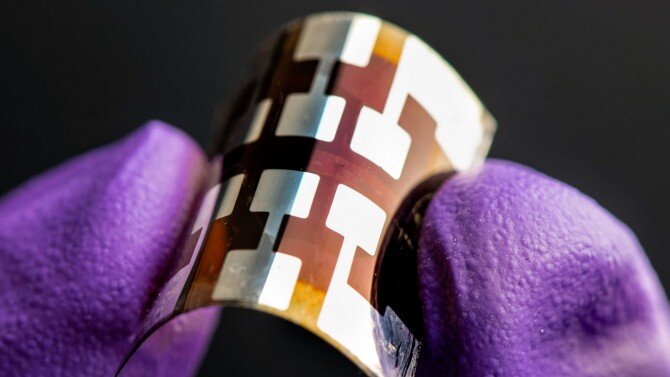Tossing worn-out solar panels into landfills may soon become electronics waste history.
Designing a recycling strategy for a new, forthcoming generation of photovoltaic solar cells—made from metal halide perovskites, a family of crystalline materials with structures like the natural mineral calcium titanate—will add a stronger dose of environmental friendliness to the green industry.
When perovskite solar panels reach the end of their useful life, how do we deal with this kind of electronic waste? It is a new class of materials. By properly recycling it, we could potentially reduce its already low carbon footprint.
As scientists design solar cells, they look at performance. They seek to know energy conversion efficiency and stability and often neglect designing for recycling.
Last year, the team of researchers found that photovoltaic wafers in solar panels containing all-perovskite structures outperform photovoltaic cells made from state-of-the-art crystalline silicon, and the perovskite-silicon tandem—with cells stacked like pancakes to better absorb light—perform exceptionally well.
Perovskite photovoltaic wafers offer a faster return on the initial energy investment than silicon-based solar panels because all perovskite solar cells consume less energy in the manufacturing process.
Recycling them enhances their sustainability, as the recycled perovskite solar cells could bring 72.6% lower primary energy consumption and a 71.2% reduction in carbon footprint.
Lowering the energy needed to produce the cells indicates a significant reduction of energy payback and greenhouse gas emissions.
The best-recycled perovskite cell architecture could see an energy payback time of about one month, with a carbon footprint as low as 13.4 grams of carbon dioxide equivalent output per kilowatt-hour of electricity produced. Without recycling, the energy payback time and carbon footprint of new perovskite solar cells show a range of 70 days to 13 months, and 27.5 to 158.0 grams of carbon dioxide equivalent throughout their life cycles.
Today’s market-leading silicon photovoltaic cells can expect an energy payback period of 1.3 to 2.4 years, with an initial carbon footprint between 22.1 and 38.1 grams of carbon dioxide equivalent emissions per kilowatt-hour output.
Recycling makes perovskites outcompete all other rivals.
Informed state and federal policies, along with recycling infrastructure development strategies, can further mitigate the environmental impacts in making photovoltaic solar cells.
The real value of an effective green perovskite solar panel industry may rely on a recycling program.







